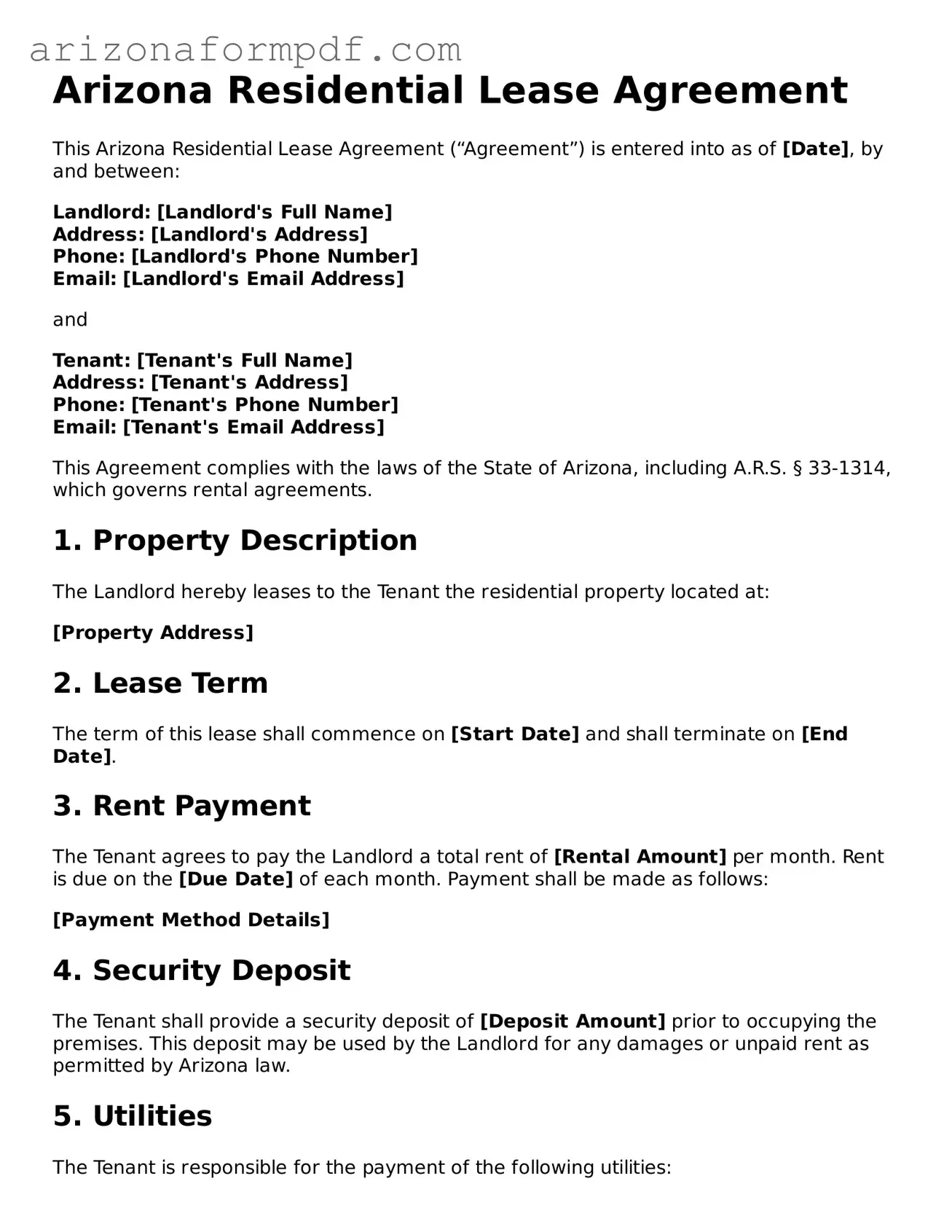The Arizona Residential Lease Agreement is similar to a Commercial Lease Agreement. While the former is designed for residential properties, the latter is tailored for business use. Both documents outline the terms of occupancy, including rent, duration, and responsibilities of both parties. In essence, they serve the same purpose of establishing a legal relationship between the landlord and tenant, though the context and legal considerations may differ significantly due to the nature of the property being leased.
Another document akin to the Arizona Residential Lease Agreement is the Month-to-Month Rental Agreement. This type of agreement allows tenants to rent a property on a flexible basis, typically with no fixed end date. Like the residential lease, it includes terms regarding rent, maintenance responsibilities, and notice periods for termination. The primary difference lies in the duration; while a residential lease often spans a year or more, a month-to-month agreement allows for greater adaptability in housing arrangements.
The Sublease Agreement is also similar to the Arizona Residential Lease Agreement. In this case, a tenant rents out their leased property to another individual, known as the subtenant. This agreement must align with the original lease terms, ensuring that both the landlord's and the original tenant's rights are respected. Both documents contain essential elements such as rent payment details and maintenance responsibilities, but the sublease introduces a third party into the relationship.
The Rental Application form shares similarities with the Arizona Residential Lease Agreement as well. While the lease formalizes the rental relationship, the application is the first step in that process. It collects essential information about potential tenants, including their rental history, income, and references. Both documents are crucial in establishing a tenant’s eligibility and the terms of occupancy, but they serve different stages in the rental process.
The Lease Renewal Agreement is another document that bears resemblance to the Arizona Residential Lease Agreement. This agreement is executed when both parties wish to extend the original lease terms, often under similar conditions. It typically reiterates the same responsibilities and obligations outlined in the initial lease, allowing tenants to continue residing in the property without interruption while providing landlords with a consistent rental income.
Similarly, the Lease Termination Agreement is related to the Arizona Residential Lease Agreement. This document outlines the process for ending a lease, detailing the notice period required and any conditions for returning security deposits. While the residential lease establishes the terms of occupancy, the termination agreement ensures that both parties understand their rights and obligations when concluding their rental relationship.
The Rental Receipt is another document that aligns with the Arizona Residential Lease Agreement. This receipt serves as proof of payment for rent, documenting the amount paid and the date of payment. While it does not establish the terms of the lease, it is essential for maintaining clear financial records and can be referenced in case of disputes regarding rent payments.
The Property Management Agreement also shares similarities with the Arizona Residential Lease Agreement. This document outlines the responsibilities of a property management company hired by a landlord to oversee the rental property. It includes terms related to maintenance, tenant screening, and rent collection, paralleling the lease in its goal of ensuring a smooth landlord-tenant relationship, albeit from the perspective of property management.
The House Rules document is another related item. While not a lease in itself, it complements the Arizona Residential Lease Agreement by outlining specific rules and regulations tenants must follow while residing in the property. This can include guidelines on noise levels, maintenance of common areas, and pet policies. Together with the lease, house rules help create a harmonious living environment for all residents.
Lastly, the Eviction Notice is a document that, while often a last resort, is connected to the Arizona Residential Lease Agreement. This notice informs a tenant of their violation of lease terms and the steps required for remedy or eviction. It serves as a formal communication that can lead to the termination of the lease, emphasizing the importance of adhering to the original agreement's terms.
